A happy and relaxed Alec in the treatment room at West Hills Animal Hospital in Corvallis, Ore. Note the physio-rolls and rocker board; both are standard equipment used in canine rehab therapy.
I am happy to report that our visit to the West Hills Animal Hospital last week was a success! Alec and I both loved Dr. Moore. I found her to be very knowledgeable and thorough, while Alec was quite comfortable in her presence. She has a wonderful “bedside manner,” which I have learned is not something to be taken for granted. Alec is sensitive and anxious, but can be made calm relatively easily by the right person.
A case in point of a very bad experience I had in this regard was one of the facilities here in Portland to which I took Alec upon moving here over a year ago. The doctor and vet tech were demonstrating to me how to apply the “soft paws” nail caps, which help prevent dogs who drag their paws from ripping their toe nails. Well, Alec (like many dogs) does not like being compelled to lie on his side, and hates being restrained even more. I warned her of this fact. Yet to apply the nail caps, they held him down -- the doctor on one end of Alec, the tech on the other -- basically bear-hugging him with a vice grip to get him to hold still. Of course, this had the opposite effect and made him frantic; he began to thrash and whine and struggled mightily to get up. This made me uncomfortable, but I didn’t want to be “that client” – you know, the annoying person who tells the doctor how to do things. However, I feel I have become a good advocate for Alec without being an obnoxiously squeaky wheel. I voiced concern (“should you be holding him down like that with his back injury?”) and the doctor said, “He is just trying to see what he can get away with.” Well, be that as it may, he also had multiple spinal surgeries eight months before and I was told by his surgeon and rehab therapists to be careful of his back! And here they are restraining him with a full nelson (half nelson? – I don’t know anything about wrestling, but they were pinning him down) while he thrashed and flailed. Finally, I could not take it anymore and said, “That’s enough. I am not comfortable with this, please let him up.” Which they did, but they were clearly internally rolling their eyes at me. The doctor admonished me: “You baby him.”
I did not think this was fair. I know a good amount about dog behavior, and I know "bad" behaviors should not be reinforced. However, this particular dog has sustained a serious injury to his spine. Furthermore, it should be a positive experience for him to come to any rehab facility, which should factor into how he is treated. Maybe he should be “babied” a little so he wants to come back and do therapy...you can’t force a dog to do rehab exercises, and a little positive reinforcement could go a long way. It seemed this was definitely getting off on the wrong paw with Alec – not to mention with me. This was our first visit and she was not earning my trust with her rough handling of Alec. Veterinary "bedside manner" involves handling the human client as much as the canine patient, and I can sympathize with vets who have to deal with difficult clients on a regular basis. I strive to be pleasant and understanding in my interactions with veterinary personnel; I truly appreciate them and I want them to like Alec and me. But I think my concerns about Alec's back injury were reasonable and should have been respected rather than dismissed.
Afterward, I shared my misgivings about the experience with J., our trusted former rehab therapist back in Calif. (whom I was missing very much at that point!), and she was appalled that they would hold Alec down like that given his surgical history. And J. was always a proponent of rehab therapy being a positive experience for the dog. I didn’t realize this was not an attitude shared by everyone in the canine rehabilitation community. I did return to this facility a few times, trying to keep an open mind (I knew I missed our people in Calif. and realized this could be coloring my experience), but that was not the only negative experience I had, and I finally stopped taking Alec there. It’s unfortunate because, as I mentioned, they are conveniently located right here in Portland! Interestingly, I have not heard any negative feedback about this place from others, and I really wish my experience had been better. But I have to trust my intuition when it comes to Alec and what is best for him.
This happened over a year ago, but it serves as a counter example to illustrate part of the reason I liked Dr. Moore so much. Alec had to lie on his side at one point during the evaluation so she could check his reflexes. I found myself involuntarily tensing up, knowing how Alec would react if they wanted to hold him down. I cautioned he did not like lying down/being restrained and briefly relayed my experience at “the other place” and how Alec only became more frantic. Dr. Moore’s response? “I find belly rubs are more effective.” Ding ding ding! Correct answer. We both rubbed his belly and asked Alec to “stay,” and it was 100% more effective than forcibly holding him down. He was such a good boy (sure, he tried to pop up a few times, but it was nothing like his panicked thrashing at “the other place”). By the end of the appointment, nervous whiny Alec was so relaxed he was resting his head on Dr. Moore’s leg. It was remarkable. I should mention Trina, the lead vet tech who is also certified in canine rehab, was wonderful as well. I was so impressed with both of them, not to mention the clinic itself; even the front desk staff was incredibly friendly and helpful. Why is this place not closer to Portland??
Because Alec’s overall experience was very positive, he will be happy to go back again, which is good because we are driving back down to Corvallis every day this week to try the two new treatments Dr. Moore had mentioned on the phone: cold laser therapy and VOM (veterinary orthopedic manipulation). I meant to write an update about that but got stuck on bedside manner. I guess I didn’t realize how important it was – and how variable – until this positive experience! I think it is something we as human patients can relate to as well: sometimes feeling intimidated by a doctor but not knowing if you should speak up. I have learned to do this for Alec, but it is a tricky balance between asking questions and not offending anyone. Although I have found a good vet will welcome questions and appreciate the fact that, as the person who lives with and observes your dog closely all the time, you are a crucial member of the veterinary team. This is part of the reason I am so happy with our current regular vet here in Portland. She is very patient with my questions (and I ask a lot of questions!) and thorough with her answers. She realizes a caregiver who is engaged and paying attention will make the veterinarian’s job easier.
This reminds me: I am reading a good book right now on this subject called: “Speaking for Spot: Be the Advocate Your Dog Needs to Live a Happy, Healthy Longer Life.” Coincidentally, the author, Dr. Nancy Kay, practices at the Animal Care Center in Sonoma County where Alec had his spinal surgeries, although she never treated Alec and I have never met her. The book, which was published in 2008, is great primer on all things related to being an effective medical advocate for your dog: asking the right questions, finding a vet and clinic you and your dog will love, knowing when to get a second opinion, making your vet appointments less stressful, etc.
Anyway, I will write more soon, but basically Dr. Moore had lots of ideas for new things to try with Alec. She confirmed that his lingering limp is due to a proprioceptive (neurological) deficit, and that the muscles in his right back leg are weakened/moderately atrophied due to his abnormal gait. However, she said he had excellent flexibility and range of motion, which means muscle shortness is not an issue. So she suggested some strengthening exercises I could do at home for the weakness and she thought Alec would be a good candidate for the two modalities mentioned above: cold laser therapy and VOM (veterinary orthopedic manipulation). The catch being that the laser therapy has to be done twice a day (1½ hours apart) for the first three days, then once a day for the next three days, and then every other day, and so on, until it gradually tapers off. The good news is she said we will know by the end of the week if it is working. If we don’t see any improvement by then I will discontinue the therapy. The basic idea behind VOM is it is supposed to open up blocked neural pathways, making it a good modality for dogs with neurological issues. The cold laser stimulates blood flow and aids in nerve regeneration as well, so these two therapies should theoretically complement each other.
So, I took the whole week off work (thank goodness I have saved my vacation days!) and we are making the hour and half trip down to Corvallis every day for the treatments. Speaking of which, we have to hit the road for day 3…more soon!
Wednesday, February 17, 2010
On Bedside Manner
Subscribe to:
Post Comments (Atom)


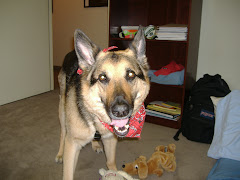

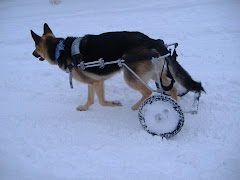
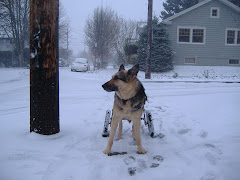

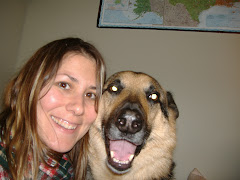
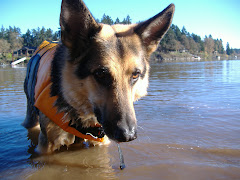
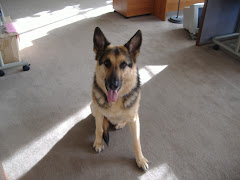
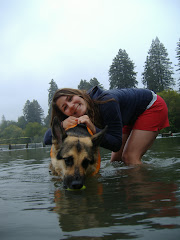_9_19_08+030.jpg)

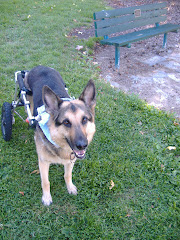
_9_19_08+045.jpg)
_9_19_08+001.jpg)
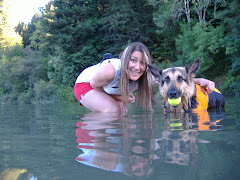
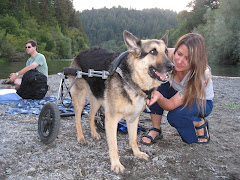
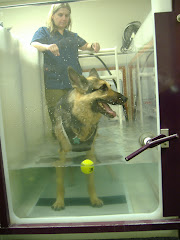
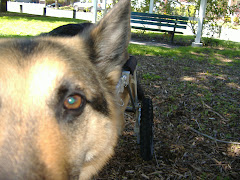
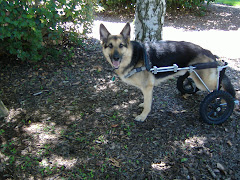
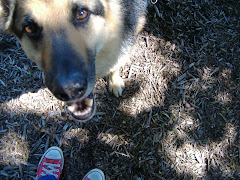
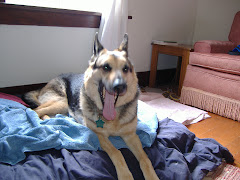
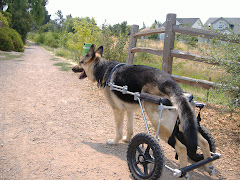
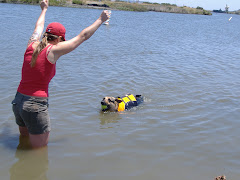
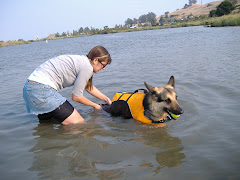
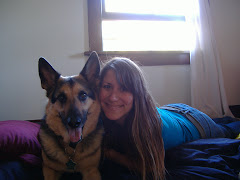
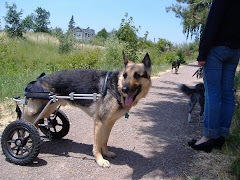
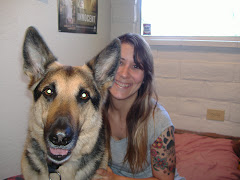
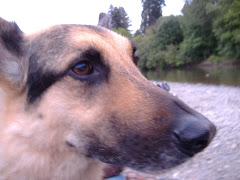
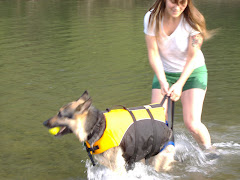
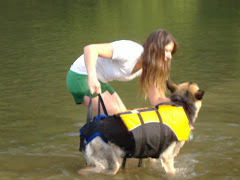
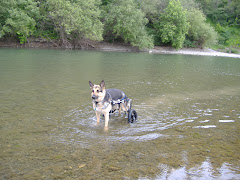

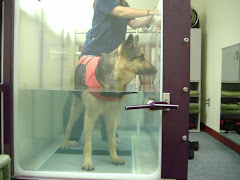
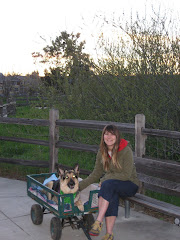
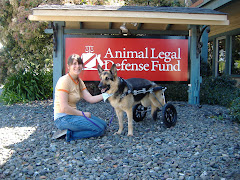
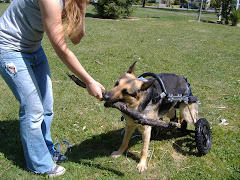

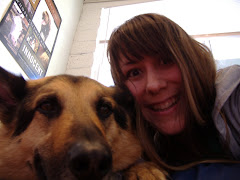
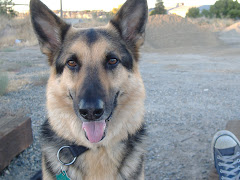


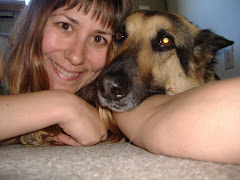

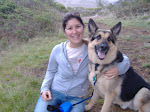
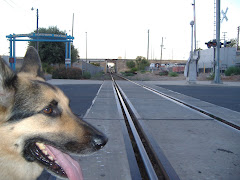



4 comments:
It's so good to hear that he could have yet more improvement! The two of you are amazing. I am really excited for you both. :)
I finally got a chance to read this post.
You are such an incredible owner and advocate for Alex!
And your experiences are fascinating.
Perhaps there's a book in your future, as well...?
Can't wait to hear the rest of the saga!
Just read this update now... You and Alec are such an amazing team! I look forward to hearing more as the journey continues to unfold.
Thanks for the tip about the book. You're such a great advocate for Alec. I do hope he responds to the cold laser. My greyhound Charles did, but now he's lame again. As you know, it's all very frustrating.
Post a Comment